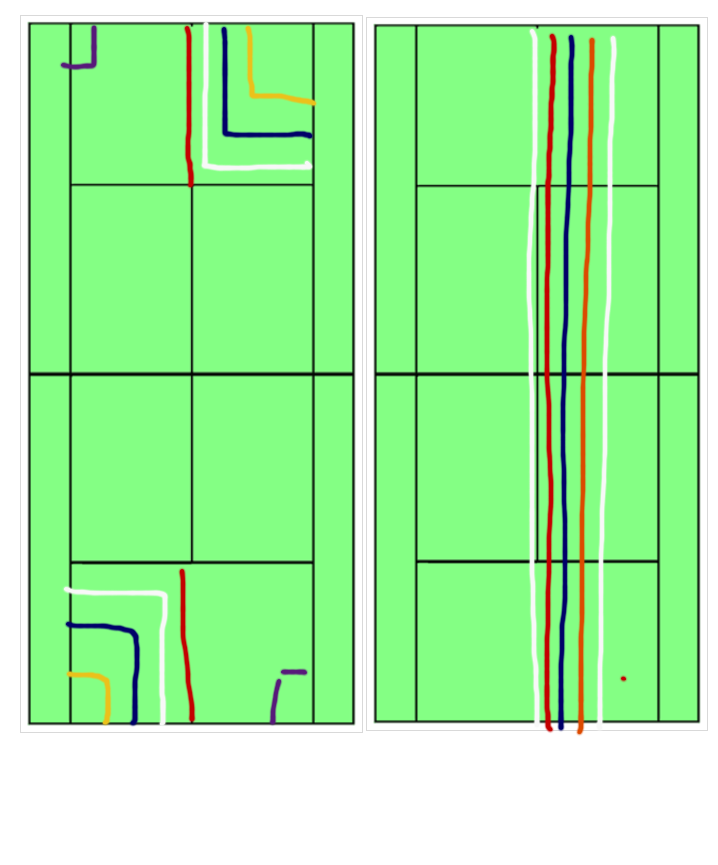Steal This Drill: High Backhands
 Sunday, November 13, 2011 at 07:34AM
Sunday, November 13, 2011 at 07:34AM  CAtennis
CAtennis  Are you tired of the same old baseline game drill? You know, the one where one guy feeds the ball...then the other guy feels bad that the ball is coming right to him so he hits the ball back to the middle. Since the ball is coming to the middle the feeder feels awkward about hitting a winner so he returns the ball to the opponent's middle of the court...the process continuing with the intensity of two old men watching the sunset from their porch.
Are you tired of the same old baseline game drill? You know, the one where one guy feeds the ball...then the other guy feels bad that the ball is coming right to him so he hits the ball back to the middle. Since the ball is coming to the middle the feeder feels awkward about hitting a winner so he returns the ball to the opponent's middle of the court...the process continuing with the intensity of two old men watching the sunset from their porch.
The simple baseline game is one of the most useless exercises in tennis. In terms of preparing you for an actual tennis match, it's about as realistic as fireplace DVD and as genuine as a dinner invitation from the cannibal tribes of Papua New Guinea.
If you want to get something out of the workout (besides using tennis as an excuse to not do homework), you have to use some imagination and simulate real life situations. Otherwise, you're better off sitting on your porch and watching the sunset; no need to wait to get old.
Here is a drill that simulates a live match situation: the high backhand game. The rules are simple - the feeder moon-balls the feed to the receiver's backhand; after the bounce, everything goes. That's it. The receiver can step in and take the ball off a short-hop or she can move back and let the ball drop. The receiver can hit a winner off the feed or, if she misses, she loses the point. This game kick-starts the intensity right away and the pattern resembled what goes on in a match quite often - one player pushing the opponent deep into the backhand corner and, consequently, opening up the court for the kill-shot. The feeders can alternate feeds so that everybody can have the opportunity to defend or be on the offense. The picture above shows the bounce of the ball (at least 6-7 feet high - that is, above the opponent's shoulder). This is another example of understanding the external stimuli and learning how to be comfortable under pressure. Furthermore, by noticing the level of discomfort that a high ball creates to you, you will grasp the importance of turning the tables on your opponent and utilizing this strategy in a match.

Reader Comments (2)
should the feeder feed from the crosscourt position instead of from the middle of the court? I've been trying to vary my feed position when I'm training someone. I used to always feed from the middle of the court just out of habit, but, now I'm making a point of it to feed from the corners of the court to try and simulate more of a "live ball" situation. Not sure if you agree with this general concept of feeder location?
Alternating feeder location is great.. It changes the angles and the recipient's view of the court. Furthermore it teaches him/her to adjust for the various angles thus keeping his mind and strokes from becoming too rigid. Well done!